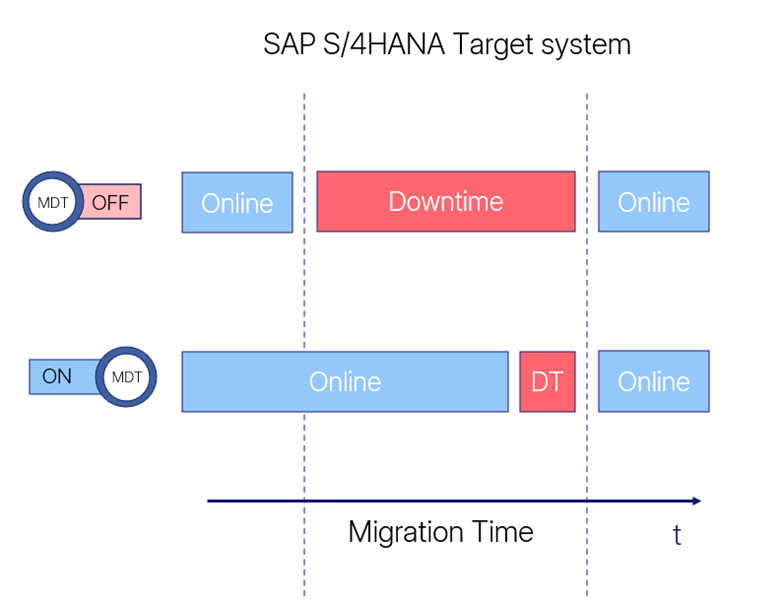How to minimize downtime on the target during SAP migrations and mergers
Let’s delve into the challenges of minimizing downtime during SAP migrations and mergers and explore how a wave-based migration strategy, paired with the minimized downtime on target approach, can help keep your systems running smoothly.
Your contact

Björn Molitor
Manager Product Development
Share
When planning an SAP migration, businesses often face a decision between two approaches: a big bang migration, where all systems and data are moved at once, or a wave-based migration, where the migration is broken down into smaller, phased waves. Both approaches are highly effective and suited for different scenarios.
A big bang migration may be ideal for businesses that want to complete the migration in a single step, minimizing the overall timeline. However, for organizations with complex landscapes, global operations, or limited IT resources, a wave-based migration can offer more flexibility. In this phased approach, data and systems are transitioned gradually, with each wave tested and validated before moving on to the next.
While wave-based migrations are effective at minimizing disruption to the source systems, downtime on the target systems remains a challenge. This is where SNP’s Minimized Downtime on Target (MDT) solution comes in, helping to reduce downtime for systems already live in the target environment during ongoing migrations.
The challenge of downtime on target systems
Wave-based migrations are excellent for managing complexity, but target systems can still face downtime when new waves of data are integrated. This downtime can disrupt operations for departments or regions that are already live in the new environment. For example, if a company brings its European operations live in the first wave, downtime during subsequent waves for North America could impact the European team’s productivity.
SNP’s minimized downtime on target approach addresses this challenge by ensuring that downtime on the target system is minimized, allowing businesses to maintain operational continuity during each migration wave.
SNP’s Minimized Downtime on Target (MDT) solution
Here‘s a more detailed look at the phases in an MDT project:
- Staging environment: Data is first migrated to a staging client before being integrated into the production system. This prevents any disruption to the target system during the migration.
- Duplicate detection: MDT identifies duplicate records during the migration process, ensuring that existing operational data is not overwritten or impacted.
- Number range coupling: MDT manages the renumbering of data by coupling number ranges between staging and production systems.
- Final data move: Once the migration is complete, the data is moved from the staging client into the production system with minimal downtime, ensuring business continuity.

Why choose wave-based migrations?
Wave-based migrations offer several advantages for organizations with complex environments:
- Minimized disruption: By migrating in smaller phases, companies can ensure minimal disruption to daily operations, as each wave is carefully tested and validated.
- Better control: Phased migrations allow for more control over the process, with opportunities for thorough testing, reducing the risk of errors and ensuring quality outcomes.
- Resource allocation: Companies can manage limited IT resources more effectively, spreading the workload across multiple phases instead of executing the migration all at once.
- Localized support: Global organizations can stagger their migrations based on regions or time zones, minimizing disruptions and providing localized support during each wave.
Case study: E.ON's multi-wave SAP S/4HANA migration
SNP has been supporting E.ON, a leading energy company, in migrating 134 company codes to an SAP S/4HANA instance. With SNP’s approach, E.ON will minimize the downtime for 267 company codes already live in the target system, ensuring smooth business operations throughout the migration waves.
Strong partner for your next migration project
SNP’s minimized downtime on target approach offers a solution to one of the biggest challenges in wave-based migrations: downtime on the target system. By reducing downtime and ensuring business continuity, MDT helps businesses undergo complex migrations with minimal disruption. Whether you're considering a wave-based or big bang migration, SNP has the expertise to support your journey to SAP S/4HANA.
Interested in learning more? Contact SNP to discover how we can help minimize downtime in your migration.
Your contact

Björn Molitor
Manager Product Development




